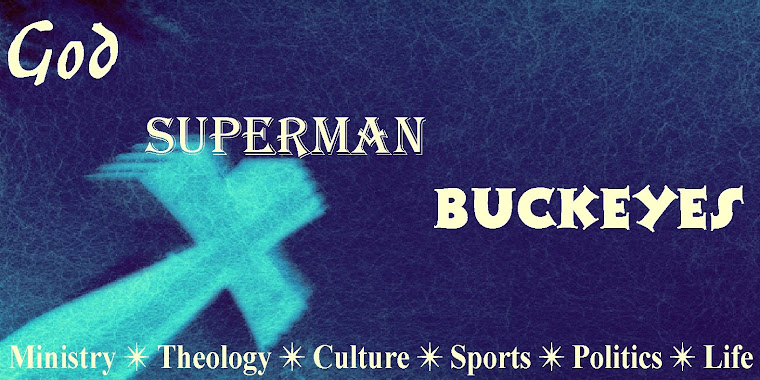 Three authors and fellow leaders of the neXus church in Canada have taken their experiences and conversations regarding their church and put them into a book. The book is written in a conversational style (the reader is told which author is speaking throughout) and the style remains loosely dialogical throughout. I found this format to be a little cheesy and corny at times, but overall, it made for a fast-paced book and kept my attention throughout. The authors seemed like likeable and fun guys to hang out with. The conversations stay lighthearted while addressing serious and controversial matters. So much for the format . . . the content is surely what will catch the reader's attention more than anything.
Three authors and fellow leaders of the neXus church in Canada have taken their experiences and conversations regarding their church and put them into a book. The book is written in a conversational style (the reader is told which author is speaking throughout) and the style remains loosely dialogical throughout. I found this format to be a little cheesy and corny at times, but overall, it made for a fast-paced book and kept my attention throughout. The authors seemed like likeable and fun guys to hang out with. The conversations stay lighthearted while addressing serious and controversial matters. So much for the format . . . the content is surely what will catch the reader's attention more than anything.My first observation is that the book title is a bit of a misnomer. I had envisioned a theological/ecclesiological interface with these "four colors" that never really materialized. The four colors they describe are not really about God as much as they are about the church. I would have expected each of the four colors to be rooted in theology proper, and then applied to ecclesiology. That wasn't the case.
The authors are self-professed "emergent" pastors leading a self-described "emergent" church. The influences of emergent leaders is evident (the first part of the book is entitled "The Stories we Find Ourselves in" - Bryan McLaren would be proud), and one of the authors talks about the influence Doug Paggitt and others have had on him. Clearly most impactful in this book has been the work of Robert Farrar Capon (whom I profess being unfamiliar with), and his work on the parables. He is referred to throughout and quoted often. So, in some regards, this may be looked upon as an example of the rapidly evolving second order or second level of emergent theology - putting the ideas of the leaders into practice.
I could ramble on tit for tat regarding many of the specifics regarding the book, but instead I want to make a couple general points. There were some places I found great insight and appreciated their perspective (in particular, I found the first section on grace to be a good articulation of a challenging concept - I love their point that if we are preaching grace like we should, people should think we are being too liberal with it - see Paul), other places I found myself a bit challenged, and a few I was cautiously skeptical.
If I was grading my experience with the book, I'd give it a B-. I like their four-part division as I think the four areas are worthy of discussion and a helpful way to divide the topic (btw: blue is the Gospel faith - the strongest part, in my opinion), green is health - I really, really liked this approach to ethics, as well - it reflects the way I've approached sexuality when talking with teens (they're emphasis is on research - what is destructive, what is healthy as opposed to letter of the law . . . my problem here is that it places a lot of trust in research . . . remember, homesexuality was at one time listed as a mental disorder . . .), red is inclusive community (here I felt that the authors had to do a little hermeneutical gymnastics to make their point and blew through some strawmen arguments while overpassing more challenging texts), and yellow is contextual engagement (which I thought was helpful to hear them address pastorally, but wasn't done as well as many other books that our out now.)
In general, I think this is a book worth taking a look at for church leaders. They will no doubt challenge you (unless you too think cursing isn't that big of a deal and that sexual sins are less devastating than sins of pride and exclusivity - I challenge the authors who say that the Bible teaches the sins of pride and judgmentalism are more detrimental than sexual sins - you could argue the heart of the Old Testament antithesis began with sexual misgivings (Moab and Ammon came from where?) . . . but they raise some very helpful and insightful conversations - like this one regarding sexuality. I think they help raise questions that can push our thinking forward. I also think that they give a little insight into where the church will be heading into the future as younger leaders with different ethical mores, but strong spirituality lead them to cutting edge churches. This may be a good book for anyone fluent in emergent church conversations who feel themselves agreeing with everyone at every point . . .this book should offer a challenge to your status quo at some point.







No comments:
Post a Comment